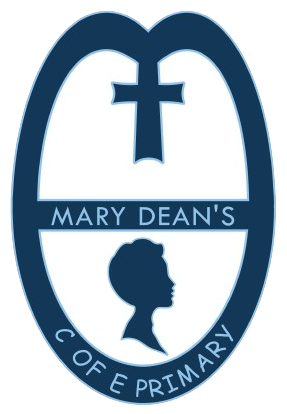'Design and Technology at Mary Dean's aims to inspire creativity, critical thinking and practical skills, empowering children to design, innovate and solve real-world problems.'

'Every child is a designer'
'Design and Technology education empowers children to turn their ideas into reality, fostering creativity, problem-solving skills and innovation for the future'- Unknown.
Our DT Intent:
At Mary Dean's CE Primary School, our Design and Technology curriculum aims to cultivate creativity, innovation and practical skills in every child. By engaging in hands-on projects and problem-solving activities, students learn to design and create solutions that address real-world challenges, fostering a spirit of curiosity and resilience.
Our DT links to our school's core values:
Our place in the world: our DT curriculum teaches children how to create solutions that address global and community challenges. Through sustainable design projects and problem-solving tasks, children learn to think critically about their impact on the environment and society. This approach encourages them to be responsible citizens who contribute positively to the world around them.
Our wellbeing: our DT curriculum encourages children to engage in hands-on, creative activities that foster a sense of accomplishment and joy. Through collaborative projects, children build strong relationships, learn teamwork and enhance their problem-solving skills, contributing to their overall mental and emotional health.
Our Voice: our DT curriculum encourages children to express their ideas and innovations through hands-on projects. By designing and creating their own solutions, children learn to communicate their thoughts, collaborate with peers and take pride in their unique contributions.
Our aspirations: our DT curriculum inspires children to dream big and think creatively. Children explore their potential as inventors, designers and problem-solvers. They set personal goals, experiment with innovative ideas, and learn resilience in the face of challenges.
Our DT Implementation:
We use the National curriculum attainment targets to plan and assess DT lessons. We ensure that children have a range of focused practical tasks to ensure children practice key skills before designing and creating their final piece.
The National Curriculum aims for Design and Technology:
The national curriculum for design and technology aims to ensure that all pupils:
- Develop the creative, technical and practical expertise needed to perform everyday tasks confidently and to participate successfully in an increasingly technological world.
- Build and apply a repertoire of knowledge, understanding and skills in order to design and make high-quality prototypes and products for a wide range of users.
- Critique, evaluate and test their ideas and products and the work of others.
- Understand and apply the principles of nutrition and learn how to cook.
Senior Leaders and Subject Leaders will use discussions with pupils and teachers, alongside our planned curriculum and evidence of work, to ensure that all elements of the curriculum have been delivered.
We teach the key skills for DT explicitly and focus on different skills each lesson, so children understand what is expected of them in terms of the design, make and evaluation aspects of the subject, which includes correct and safe use of tools. (See progression of skills document).
Please see our DT pathway, knowledge and skills progression and topic overviews below.
Our DT Curriculum Impact:
Children leave each year with the knowledge and skills required to enable them to access and apply to subsequent learning. Children will be aware of different inventors and designers from a range of cultures and historical periods. Children will be able to make links to previous learning and understand the relevance of these connections. Children will be assessed throughout the module using the DT skills from the progression of skills sheets and also given the opportunity to apply their taught skills in an end product which is assessed to support a summative judgement.
Assessment is carried out in a number of ways:
- Peer assessment
- Teacher Assessment (focused practical tasks and progression of skills)
- Pupil presentations
- Celebrations
- Final product.
